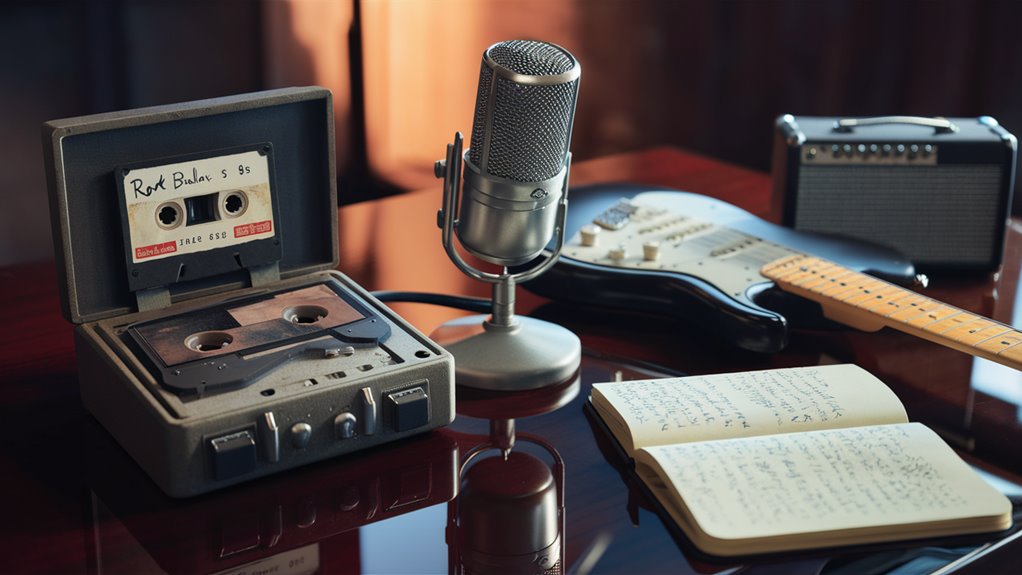
Underrated Rock Ballads : That Are Easy to Nail
Less Known Rock Ballads You Can Play Easily

Start With Rock Ballads
Rock ballads are great for building guitar skills and singing skills at the same time. Choose songs with easy chords and singing parts to build trust in your skills while keeping the music real.
Top Easy Ballads for Beginners
Here are some classic rock ballads to start with:
- “More Than Words” by Extreme
- “Love Song” by Tesla
- “When I See You Smile” by Bad English 호치민 퍼블릭가라오케 예약하기
These songs use a I-V-vi-IV progression (Mostly C-G-Am-F), which makes them easy for new players but they are still loved by all.
Learn The Right Way
Begin slow, at about 40-50% speed, to get your form right. Work on:
- Smooth chord changes
- Right finger spots
- Even strumming
- Keeping your voice on pitch
Go Deeper
Once you have the basics down, look into more rock ballads. There are many songs out there that offer a bit more challenge but are still doable. Record yourself often to see how you’re doing and find what needs work
With each new song you learn, you’ll get better at harder techniques, growing your music skills and your stage skills.
Best Practice Tips for Rock Ballads
Basic Practice Ways
Mastering rock ballads means a focused practice on the basics. Begin with practicing chords alone, focusing on smooth moves between Major and minor shapes. Practice slow, at about 40-50% speed, and only speed up when you can move smoothly and evenly.
How to Control Your Sound
Palm muting and sound control are key for great rock ballad playing. Create soft verse parts and loud chorus parts with good timing. Use a metronome set between 60-80 BPM to keep your tempo even, which is key for playing ballads right.
Guitar Moves to Learn
Advanced bends and vibrato control set apart top rock ballad playing. Start with quarter-tone bends and work up to full-step bends, check your pitch with a tuner. Do finger strength drills to hold notes longer and put more feeling into them.
Make Your Playing Better
Recording yourself is a key way to get better. Watch for timing slips and changes in loudness and softness. Work on keeping your soft playing clear but gentle. Try both sitting and standing to make sure you can play well in any show spot.
Chords You Have to Know

Important Rock Ballad Chords
The I-V-vi-IV progression (C-G-Am-F) is a must-know for rock ballad playing on the guitar. This chord set is the emotional base of many classic rock songs, giving them that deep, moving sound.
Chords to Build Your Skills
Begin with mastering the I-IV-V progression (G-C-D) found all over rock songs. Next, learn the vi-IV-I-V pattern (Am-F-C-G) for a strong sound in verses. For darker songs, try the i-VI-III-VII progression (Am-F-C-G) to add drama, great for minor-key ballads.
More Advanced Chords and Ways to Play
The ii-V-I progression (Dm-G-C) adds more fancy moves to your playing. Practice these chords in many keys with different strumming styles. Focus on moving between chords cleanly – a sign of really knowing your stuff. Try both major and minor setups to grow your music and feeling range.
Key Things to Keep Doing:
- Get good at moving between chords
- Practice in various keys
- Use different strumming ways
- Try both happy and sad chord sets
- Keep your chord changes neat
How Songs Are Put Together
A Classic Song Setup
Rock ballads mostly follow a well-used song form that’s been big in music for years. The basic ABABCB setup is used in many hit songs, where:
- A parts are the verses
- B parts make up the hooking chorus
- C part is a bridge or solo
Main Parts of Big Ballads
Start of the Song
The first verses set the story up, making a deep link with the listener. A big lead-up before the chorus builds the feel before moving into a catchy chorus.
Grow The Song
The second verse adds more story while keeping the tune the same. The key bridge part brings in new music bits, often through:
- New chords
- Different tunes
- New ways to tell the story
Finish Strong and Right
Chorus Again
Final choruses often play twice, adding: Night More Inclusive for Everyone
- Bigger sounds
- Key changes
- More background play
Close the Song
Ending ways use either:
- Getting quieter with a fadeout
- Ending on a final chord
- Long play-outs
The tested ballad setup gives a plan that mixes new ideas.
